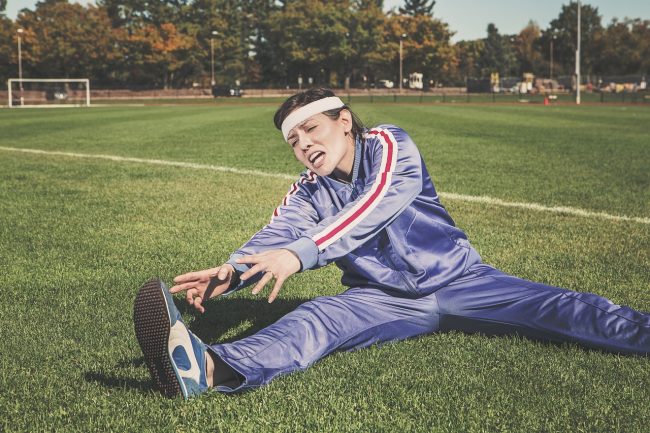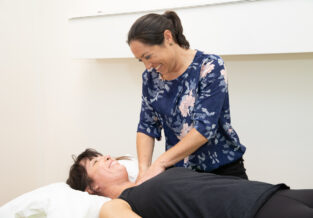Taking It Slow Is The Key To Being Fit And Fab In Time For Summer!
Published on
17 Aug 2015


Written by
Emma Martel (Lee)
Consultant Physiotherapist
Call us on: (03) 9975 4133
If you are anything like me, it’s become a bit of a habit to hit the snooze button at 6am and sleep through the run or gym class during this long Melbourne winter. However, as spring draws near and our trouser buttons becomes that much more of a struggle to close we begin to question HOW on earth we can get rid of that extra weight and tone up before summer hits?!
If you are anything like me, it’s become a bit of a habit to hit the snooze button at 6am and sleep through the run or gym class during this long Melbourne winter. However, as spring draws near and our trouser buttons becomes that much more of a struggle to close we begin to question HOW on earth we can get rid of that extra weight and tone up before summer hits?!
Don’t Boom and Bust – Graduated Return to Exercise
It’s a great idea to sign up to the gym or start back on your running routine, however you must make sure that you follow a graduated return to an exercise program as injuries can easily pop up if you go back too hard too soon.
As a physio, I often see patients who have pushed themselves to their pre winter distance and speed on their first run back and then have ended up out of action with an injury. Where you start will depend on your current fitness level and the distance/speed you were running prior to having a break. I recommend that you start by breaking up your run into short intervals and incorporating a walking component into your routine. This way, you will be able to focus on your technique, you will be less limited by your (or potentially lack of) cardiovascular fitness, and you are much less likely to fatigue and lose form. A great example of this would be to run for 1km and then walk the next 500m, and so on.
Fatigue puts us at risk of injury when we push too hard too soon, as our stabilising muscles (in particular core and glutes) can ‘switch off’ or work less effectively when they are fatigued. This impacts our running technique and can lead to compensation that may overload certain structures, or cause certain muscles to work harder or not work at all. By running intervals and gradually progressing your distance, you will be allowing your muscles to adapt and activate effectively and timely without pushing them to extreme fatigue where they stop being effective and start causing pain.
Similar rules can be applied when returning to your weights program. Make sure that you warm up starting with low weights, and putting a real focus on your technique. I often see injuries as a result of general fatigue at the gym, or when we load a muscle group too heavily and are unable to maintain correct technique. Remember that in order to achieve maximum benefits, take the time to gradually build up to heavier weights. This will allow you to not only reach pre-winter weights, but also gradually build additional weight without injury.
Make sure that you give yourself a few weeks to build back to your normal exercise program, as in the long run you will be much less likely to hurt yourself and have to rest completely which will hold you back from getting fit and fabulous before summer hits!
Give Yourself Time to Recover
Particularly after a prolonged break, our body needs time to rest and recover from exercise ‘on’ days. Starting a 7-day-a-week exercise program after being completely sedentary for the past few months is not a realistic or healthy plan when you are just starting back. In the beginning, give yourself a rest day in between sessions so that your body can recover and heal properly from the session. This will reduce your risk of injury, and allow you to make use of your precious time with more effective and efficient sessions.
Cross Train
Our musculoskeletal system likes change and variation, and the same repeated loading could put us at risk of an overuse injury. You must remember to keep things interesting and change up your exercise routine. For example, if you are a runner, factor in a combination of long, short, tempo or interval sessions. For weights, try to factor in an element of mobility work so that you don’t become too stiff and inflexible. This may be in the form of some cardio or some foam roller/stretching sessions. Research confirms that strength training is an important factor in performance in any given sport. Try to factor in at least one day of strength training per week as it is guaranteed to improve your performance, whatever your sport may be.
So look to the sunshine and get motived to get back out there, just make sure that you keep these handy tips in mind! You’ll thank me at the beach!
About the Author
Emma Martel (Lee) — Consultant Physiotherapist
Emma values the importance of listening to her patients to fully understand their symptoms and treatment goals. Through skilled biomechanical analysis of the whole body, her objective lies not only in treating symptoms but identifying the true origin of the problem and working with her patients to prevent future episodes of pain and injury.


